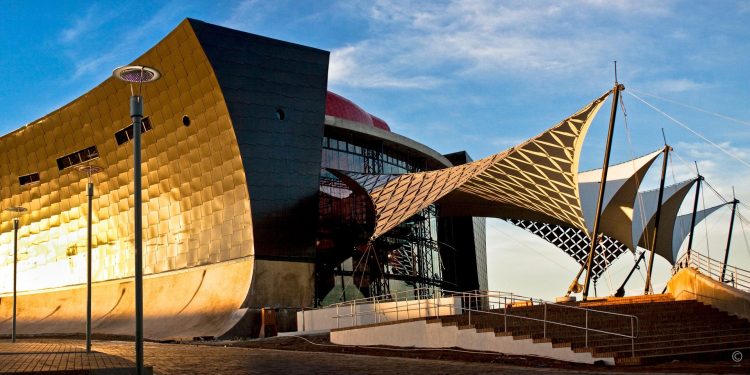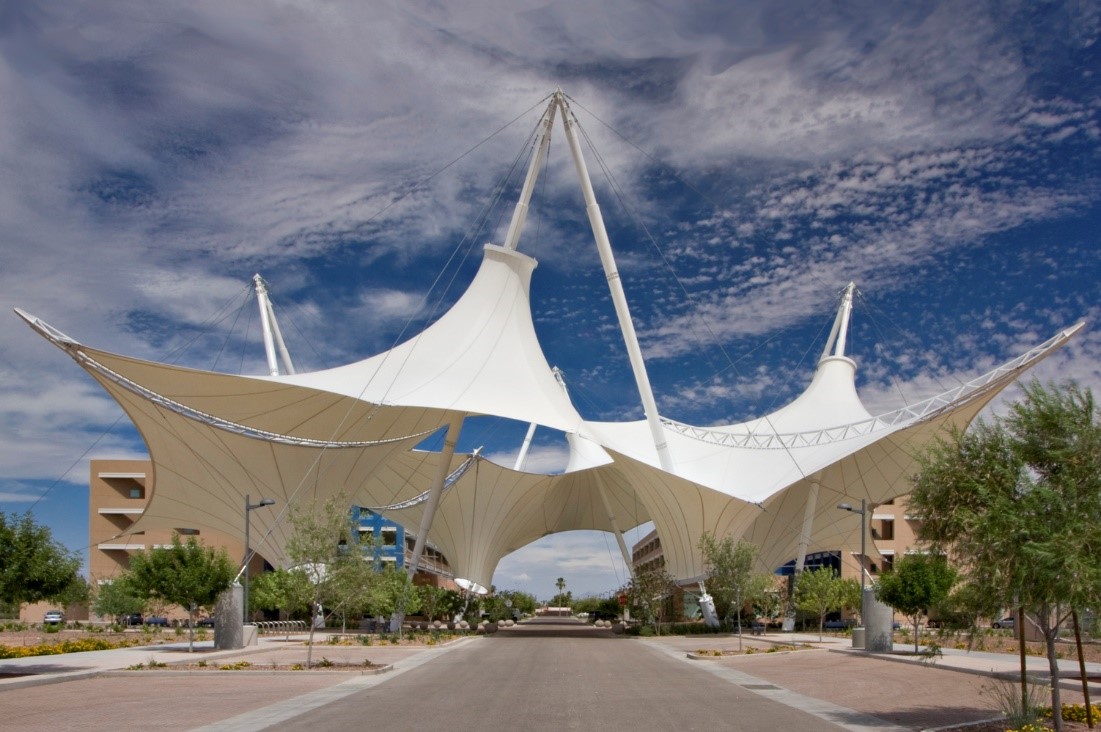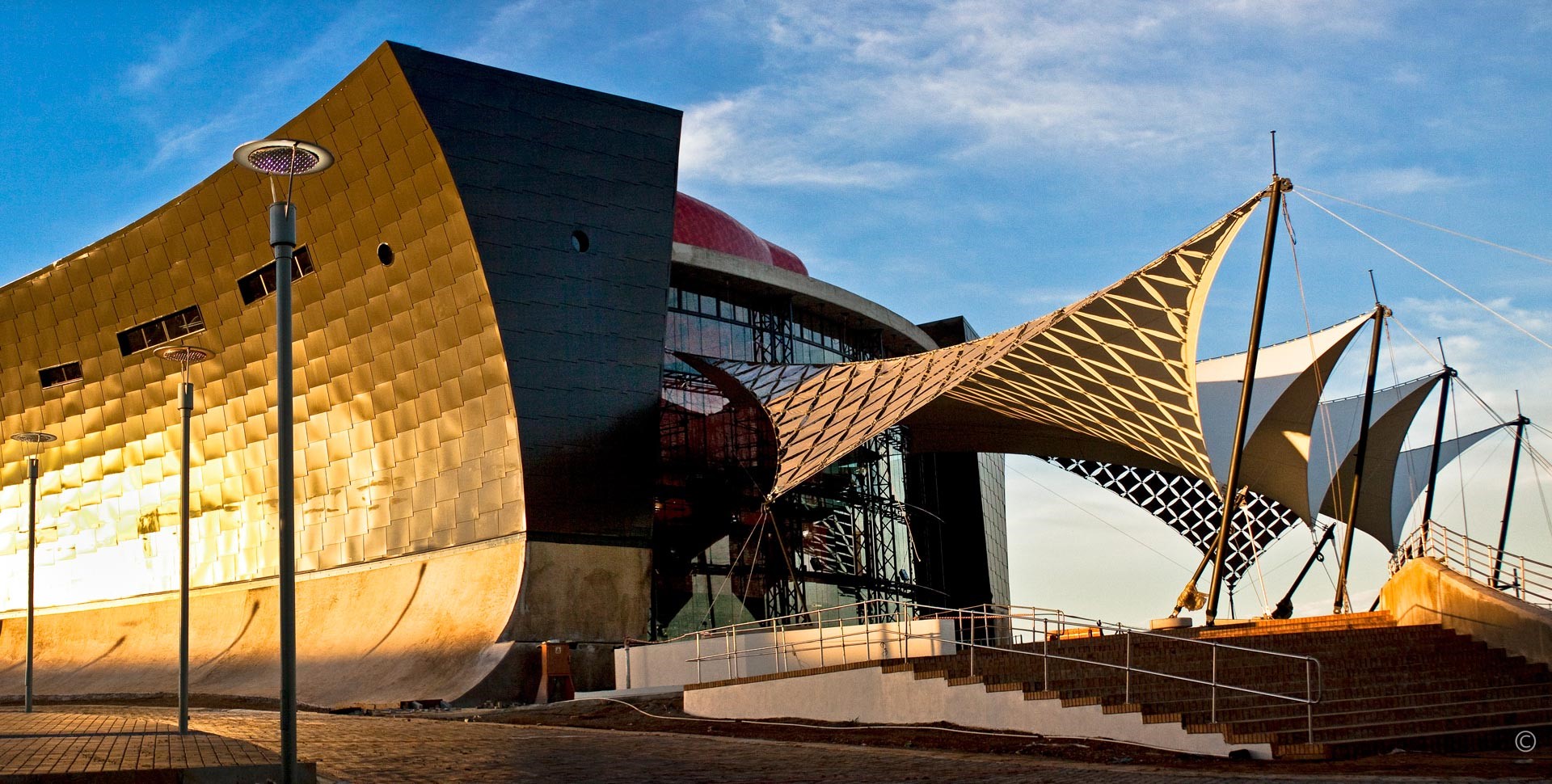
This unique roofing method was inspired by some of the very first shleters made by man, such as the black camel leather tents made by the nomadic tribes of the Sahara Desert, as well as tepees made by Native Americans. Tensile structures provide a wide range of beneficial properties when compared to other construction methods.
A tensile structure describes the construction of a roof with a membrane which is secured in place by steel cables. They work under stress, are easily pre-made in a factory, can cover a large span and are extremely malleable.
Only a small amount of material is required because the system uses thin canvases stretched over the steel cables, making them strong enough to withstand heavy forces.

They are mostly seen being used as coverings for sports facilities, arenas, horticultural and agricultural industries and public buildings. Today’s tensile structures are based on those from the era of the Roman Empire. However, it wasn’t until the mid-20th century that technology was able to make them truly durable and popular.
The cheap costs of mass production and the need for systems that could adapt to a diverse range of terrains and large spans, such as circus tents encouraged further development of the tensile roofing technique.
Original efforts were unstable, caused by the interlacing of cables and use of extremely light covers. These problems were solved during the 20th century thanks to a new system of using steel cables and fibre membranes. These offered much improved strength and were combined with waterproof coatings that protected against fire, fungus, and UV rays. The roof could also be made less or more translucent according to requirements.
There are three main types of tensile roof structures – mesh tensioned, membrane tensioned and pneumatic. Mesh structures consist of a mesh of cables which carry different forces and transmit them to different elements. Membrane structures consist of a membrane held by cables, letting the stresses distribute through its form. Pneumatic relates to systems where a membrane is supported in place through the use of air pressure. For more information on Tensile Fabric Structures, visit https://www.spatialstructures.com/building-systems-explained
Structures are supported by elements including membranes, poles, masts and cables. The membranes made from PVC-coated polyester fibres are easy to manufacture and install, are economical to produce and have a duration of around a decade.
A PTFE-coated glass fibre membrane has greater durability of around 30 years with an increased resistance to weather conditions like wind, sun, rain and snow.

There are two types of support, indirect and direct. The indirect structure is placed from a raised area like a mast, while the direct is positioned directly to rest on the building.
The cables are an important part of the structure as they are responsible for the distribution of the tensile stresses and the tautness of the canvas fabric. The cables can be classified into two categories – stabilising and loadbearing. Both types cross to ensure strength in two directions and to prevent deformation. Loadbearing cables receive external loads directly, secured at the highest point. Stabilising cables are able to strengthen loadbearing cables by crossing them orthogonally.
